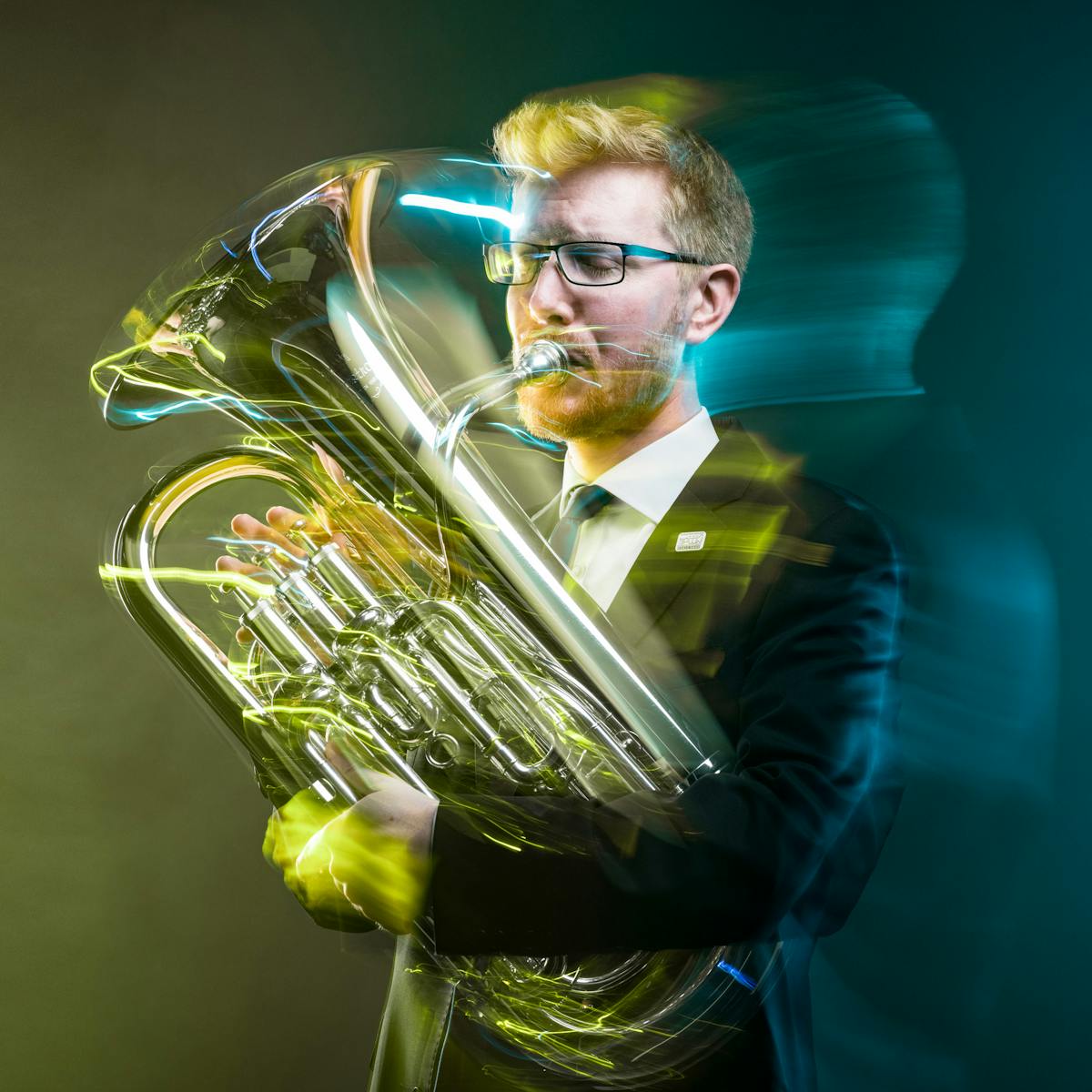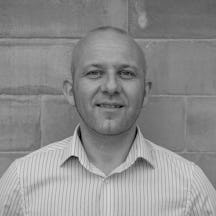A widespread perception that people with hearing loss can’t enjoy, learn and perform music is still pervasive in music education and beyond. Deaf composer and musician Danny Lane explores why it’s so important to bust this myth and expand opportunities in music.
Defying deafness through music
Words by Danny Lanephotography by Steven Pocockaverage reading time 7 minutes
- Article

In 1801 Beethoven wrote in a letter to his friend and physician Franz Wegeler: “For two years I have avoided almost all social gatherings because it is impossible for me to say to people ‘I am deaf’ … If I belonged to any other profession it would be easier, but in my profession it is a frightful state.” Even today, there are deaf and deafened musicians who keep quiet about their deafness – understandably so.
I am profoundly deaf and also a professional musician. For the last 20 years I have worked for a unique UK-based charity called Music and the Deaf, a small but highly specialised organisation focused on increasing music opportunities for people with any degree of deafness.
No single musician or deaf musician is the same. Beethoven’s experience was admirable but unique; I, for example, understand music through completely depending on my hearing aids (even though they will never replace normal hearing). I read music notation and enjoy the challenge of playing different styles of music – performing Debussy’s ‘Clair de lune’ on the piano, for example, requires a far more delicate touch compared to Rachmaninov’s percussive ‘Prelude in G minor’.
There are other deaf musicians today who have obtained music degrees and become instrumentalists, singers and composers. More needs to be done to welcome and nurture them and to invite them to share their work. Recently I spoke to the artistic director of a theatre about employing deaf musicians. He immediately refused to allow this, saying it would be a financial risk to sell tickets and expect people to want to come and watch deaf musicians. He still agreed to stage integrated performances by deaf and disabled artists, but not one of them was a deaf musician.
My route into music
As a child, I went to a small primary school in the rural Yorkshire village of Hensall. My teacher expected every child to play a brass instrument. Music was everywhere in school life and it was natural for me to be part of it. I began playing the cornet at the age of eight. My teacher would give me one-to-one lessons while the rest of my class worked on their maths exercises. If I struggled to play a note, she would draw a diagram to show how I should shape my lips on the mouthpiece. If she told me I was hitting the right note, I would memorise which muscles I used so that I could play it again in future.
When I enrolled at the music department, a student came up to me, looked at my hearing aids and asked if I was in the wrong place.
My parents were also very supportive of my interest in music and never saw my deafness as a barrier. Mum said, “Danny, do it, if that’s want you want to do.” However, finding the right college to go to was difficult. Teachers would say: “But how much do you hear while you’re playing? How are you going to access the listening tests?” They seemed to doubt my ability and I felt that I had to educate them on how to teach me music.
I made sure I passed all the exams that I needed to prove myself and to get into college. I decided to go to Mary Hare Grammar School for the Deaf in Newbury, which had an excellent music department. I passed A-level music and obtained a merit at Grade 8 piano while I was there. I then went on to study a joint honours degree in music and French at the University of Keele. When I enrolled at the music department, a student came up to me, looked at my hearing aids and asked if I was in the wrong place.
It was quickly accepted, however, that I was a musician too. We did listen to a lot of CDs during lectures, but this wasn’t enough for me. Much of my learning was done in my spare time, analysing music scores in the library and listening privately and as many times as I could. I also had a note taker who would write down everything that was discussed during lectures. This was the only way to stop me falling behind.
I left Keele with a 2:1 and became a trainee workshop leader at Music and the Deaf. I loved it so much because I was able to inspire deaf children and share with them my passion for music. It immediately struck me, though, that none of the children I worked with had the same music opportunities that I had, and I wanted to do something to change that.
The disciplined process of practising music and playing it differently until I find the desired effect requires patience, decision-making, self-confidence and technical balance. This as a whole develops resilience that is valuable for me in any situation in life, such as when I’m speaking on stage in front of an audience. I can remain visibly calm even though my stomach is full of butterflies. Music gives me strength, it gives me the voice that I need, and I find it empowering.
How deaf people are excluded from music making
However, even today, music is still widely regarded as an inaccessible activity for deaf people and there are many deaf children who are excluded from music lessons. Hearing loss shouldn’t be a barrier to enjoying and making music. It is proven that participation in music can play a crucial role in a person’s development: it teaches young people how to work together, builds confidence, develops communication skills and provides a vital outlet for self-expression. Music is universal: it bridges communities and enriches lives.
Now and again we see the odd viral post shared briefly online about an ‘inspirational’ deaf musician. But journalists often fail to grasp what music and deafness is. Most seem to be inclined to talk about singers, such as Mandy Harvey, and feeling vibrations, as the percussionist Evelyn Glennie does. But there are deaf musicians with varying degrees of useful hearing who play musical instruments as well as singing, and compose using music technology. We all access music and perceive it in different ways.
I believe that there are many deaf musicians out there, and I do hope they are leaving their own musical mark in the world on their mobile phones, on their social media profiles, in their own private recording studios, on apps and software and on manuscript papers, so that their work can be discovered, critiqued and enjoyed. With the advancement of technology and the new possibilities of accessing and sharing music online, it is a more liberating time than ever to compose and perform.
Music projects that reach deaf children
Music and the Deaf has carried out ground-breaking projects during its 30-year history, including creating the National Deaf Youth Orchestra and Frequalise (a music-technology project). Recently, we set up Modulate, which helps to open up opportunities to play musical instruments. We reached over 140 deaf children through inspirational music workshops that were led by deaf music graduates and role models who said, “If I can do it, so can you.”
When we asked the children who took part in Modulate if they wanted to carry on playing music, over 80 per cent said yes. We are providing training and deaf awareness to music teachers to give them the confidence and skills to work directly with deaf students and we do hope this will help to make music education in England more inclusive. But the arts sector also needs to do more. Risks can only be controlled through research and development and by working with a wider range of artists.
It is easy to be ignorant or indifferent about deafness, but in fact, one in six of the UK population live with hearing loss. Beethoven was profoundly deaf when he conducted the premiere of his Ninth Symphony and had to be turned around to see the audience giving him a standing ovation. His deafness didn’t prevent him from creating one of the best-known works in the history of Western music. And there’s no reason why other deaf people today can’t play their part.
About the contributors
Danny Lane
Danny Lane is a profoundly deaf pianist and is the Artistic Director for the charity Music and the Deaf. During his career, Danny has designed, delivered and managed projects including the National Deaf Youth Orchestra and is currently leading the UK-wide Modulate project with seven government-funded Music Education Services to increase investment in and access to music-making for deaf children.
Steven Pocock
Steven is a photographer at Wellcome. His photography takes inspiration from the museum’s rich and varied collections. He enjoys collaborating on creative projects and taking them to imaginative places.

